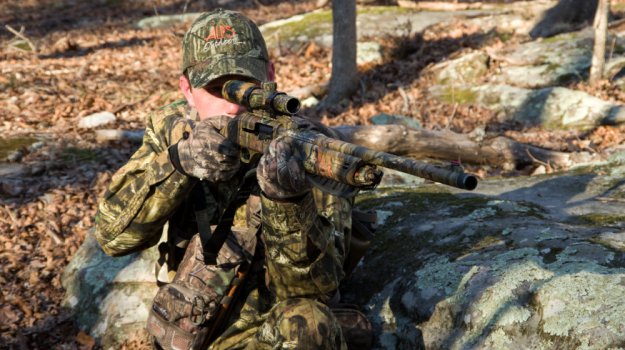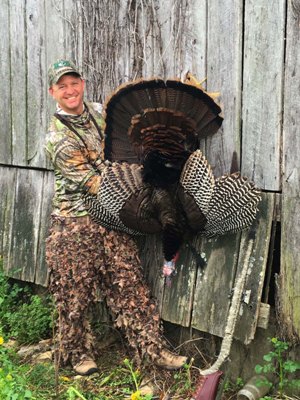
I've only mounted one turkey as long as I've been hunting, but that old bird was really special. I had set up on this turkey several times during turkey season and actually gotten him to within gun range one of those times. However, I was hunting with a turkey scope on my shotgun in a driving rain. As I looked through my scope, I noticed that the front lens of the scope had rain all over it, and I couldn’t see clearly enough to shoot. So, I reached up and rubbed the scope with my gloved hand, not realizing I’d put that hand on the ground and had mud on it. When I wiped the lens, I just put mud where the rain had been. I was upset. That morning was the first time I had called that gobbler into shooting range, and now I couldn’t take the shot, because I couldn’t see him through my scope. I was so aggravated at missing an opportunity to take this ole gobbler that I went back home that day and took the scope off my shotgun. I sighted my shotgun in, so I could aim without the aid of a scope.
 On May 28th that year, I decided to go back and try to take that turkey again. The weather was bad. Rain was coming down, and the temperature was about 35 degrees. I invited my wife, Megan, to go with me. But for some reason, she just didn’t want to go hunting that morning. I reached the edge of a field where I planned to hunt the gobbler. Just before daylight, I heard him gobbling, but the bird was about 350 yards from me. Because the foliage was budding out, I was able to move, get fairly close to the bird and set up to take him. Then, I started calling to him. On that particular morning, that gobbler would answer any type call I gave him. Before long, I saw what looked like a flashlight turned on bright, coming through the weeds. That gobbler had the biggest, whitest head I'd ever seen on a turkey. When the gobbler was at 18 yards, I squeezed the trigger and saw him go down. I was fairly confident that he was a really old turkey. When I finally got to him, he had one spur that was 1-5/8-inches, and the other spur was 1-1/2 inches long, and he was a double-bearded gobbler. His biggest beard was 11-1/2-inches, and the second beard was 9-1/2-inches. He weighed 23.8 pounds,which was a very big gobbler for New York.
On May 28th that year, I decided to go back and try to take that turkey again. The weather was bad. Rain was coming down, and the temperature was about 35 degrees. I invited my wife, Megan, to go with me. But for some reason, she just didn’t want to go hunting that morning. I reached the edge of a field where I planned to hunt the gobbler. Just before daylight, I heard him gobbling, but the bird was about 350 yards from me. Because the foliage was budding out, I was able to move, get fairly close to the bird and set up to take him. Then, I started calling to him. On that particular morning, that gobbler would answer any type call I gave him. Before long, I saw what looked like a flashlight turned on bright, coming through the weeds. That gobbler had the biggest, whitest head I'd ever seen on a turkey. When the gobbler was at 18 yards, I squeezed the trigger and saw him go down. I was fairly confident that he was a really old turkey. When I finally got to him, he had one spur that was 1-5/8-inches, and the other spur was 1-1/2 inches long, and he was a double-bearded gobbler. His biggest beard was 11-1/2-inches, and the second beard was 9-1/2-inches. He weighed 23.8 pounds,which was a very big gobbler for New York.
I'm often asked, “Did you name that gobbler?” I always answer, “No.” Turkeys get quite a bit of hunting pressure here in New York. Most of the turkeys I take don’t live long enough to warrant a name. I never will forget that bird, the nasty weather I hunted him in twice, the size of his spurs, the length of his beard and his weight. I decided that gobbler was so special he had earned the right to be mounted.
Day 3: Jason Pollack Remembers His Toughest Turkey Fight in New York
Tomorrow: Jason Pollack Tells Us How He Deals With Turkey Hunting Pressure






























